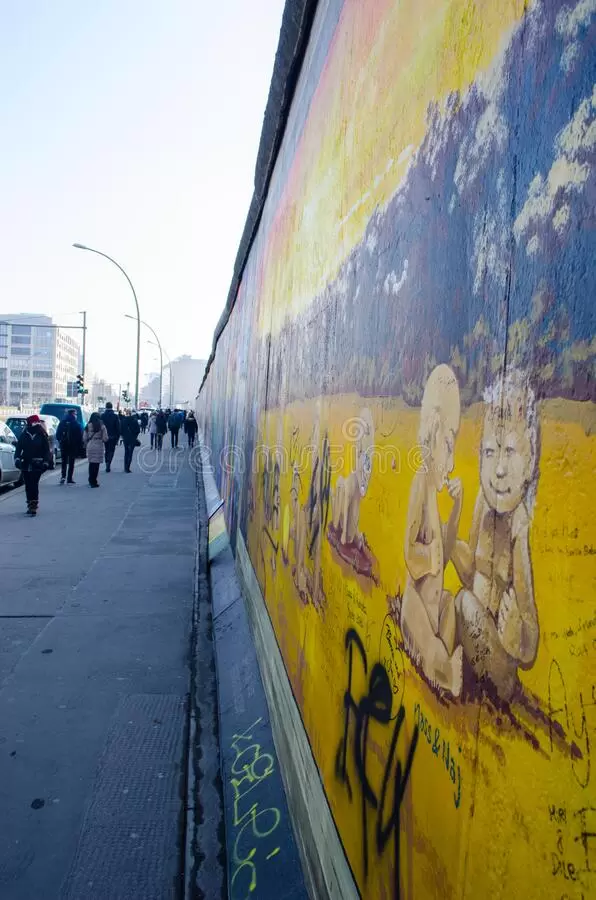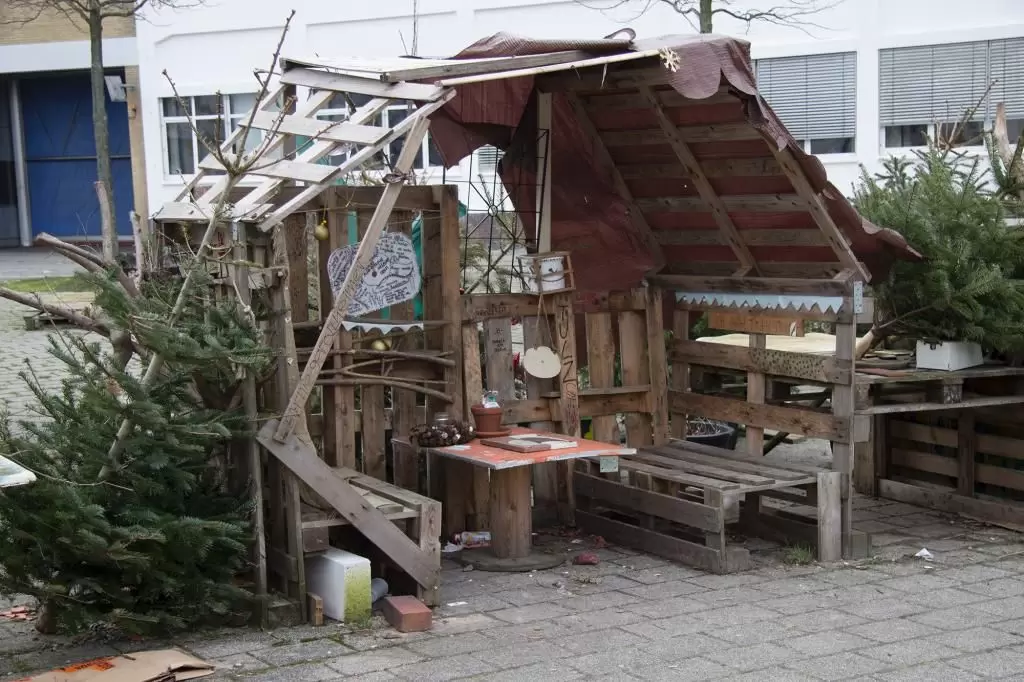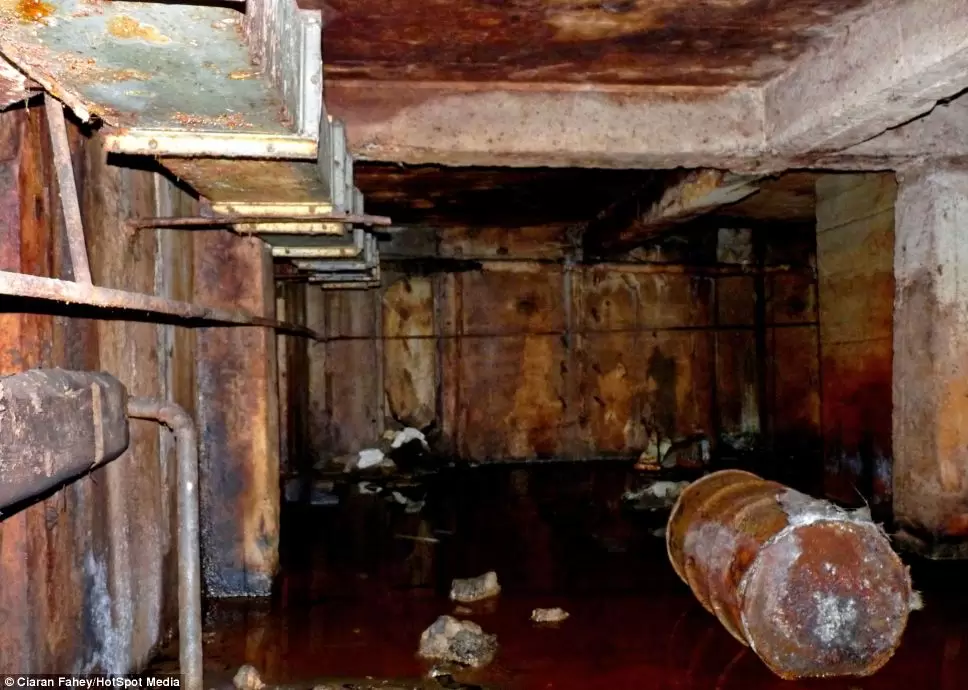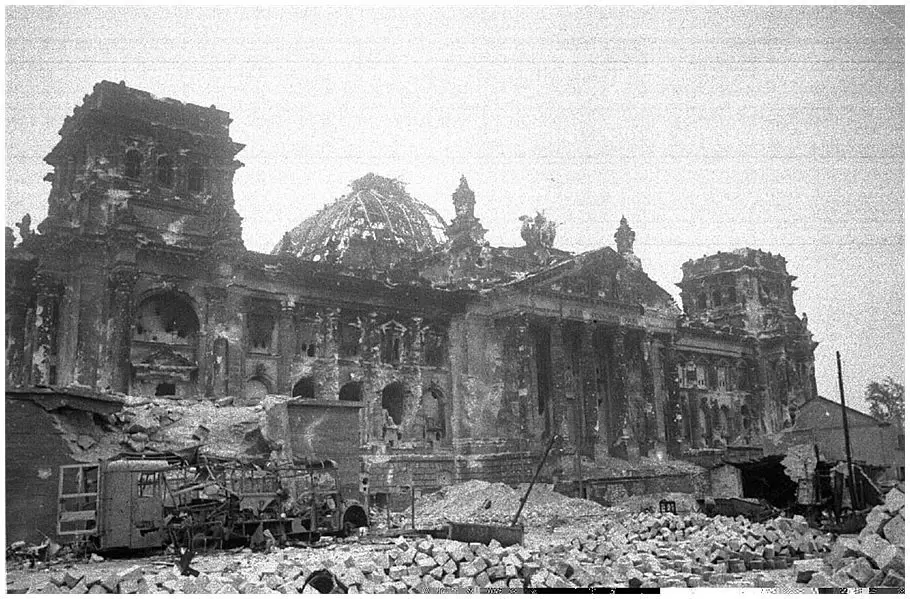World War II is one of the greatest conflicts in human history. At the end of the war, Germany's capital Berlin was largely destroyed. However, the remnants of the war can still be seen in Berlin today. Historical buildings in the city bear the traces of the war and remind visitors of its destructive effects.
The Berlin Wall is one of the most important symbols of the war. The wall defined the border between East and West Germany and existed from 1961 to 1989. Today, the remains of the wall can still be seen in Berlin and visitors can visit it to understand its historical significance.
In addition, the Reichstag building in Berlin is also a remnant of the war. The building suffered significant damage during the war and remained unused for many years. However, it was restored in the 1990s and is now used as the meeting place of the German parliament.
Other historical buildings in Berlin include the Brandenburg Gate, Checkpoint Charlie, and the Holocaust Memorial. These buildings bear the traces of the war and offer visitors the opportunity to take a historical journey.
The historical buildings in Berlin remind us of the destructive effects of the war and tell the story of humanity's struggle for peace and freedom. These buildings offer visitors an opportunity to understand the historical significance of the war and will remain an important reminder for the future of humanity.
Remnants of World War II in Berlin: Traces of Historical Buildings

Berlin is one of the cities where the Second World War was most intense. At the end of the war, the city was completely destroyed, buildings were demolished, and the streets were filled with debris. However, even years after the war, Berlin still bears the traces of the war. The traces of historical structures in the city remind us of the destructive effects of the war.
Many of the historical structures in Berlin were damaged during the war, and some were completely destroyed. However, some structures managed to survive despite the destructive effects of the war. These structures are among the most important historical structures that bear the traces of the war. For example, the Berlin Wall is one of the most important structures of the post-war period. The wall defined the border between East and West Berlin and affected people's lives for years. Today, remnants of the wall can still be seen in Berlin.
Another important structure is the Reichstag building. The building suffered great damage during the war, but was restored in the post-war period. Today, the Reichstag building is the location of the German federal parliament. The building is among the most important structures that bear the traces of the war.
The traces of historical structures in Berlin remind us of the destructive effects of the war. These structures are important for understanding the impact of the war on people. In addition, these structures are of great importance for the preservation of historical heritage. Berlin, as a city bearing the traces of the war, makes great efforts to preserve and restore historical structures. This effort is of great importance for transferring the traces of the war to future generations.
Traces of War: Historical Buildings in Berlin

Berlin is a city that has witnessed many wars throughout its history. Berlin, which also suffered great destruction during World War II, still carries the traces of the war to this day. The historical structures in the city showcase the destructive effects of the war.
The Berlin Wall is one of the city's symbolic structures. Built in 1961, the wall defined the border between East and West Germany. With the fall of the wall, Berlin was also reunited. Today, the remains of the Berlin Wall are one of the city's tourist attractions.
Another historical structure is the Reichstag building. Built in 1894, the building is Germany's parliament building. The building, which suffered great damage during World War II, was restored after the war. Today, the Reichstag building is an important structure visited by tourists.
The Brandenburg Gate is also one of Berlin's symbolic structures. Built in the 18th century, the gate was commissioned by King II. Friedrich of Prussia. The gate, which was damaged during World War II, was restored after the war. Today, the Brandenburg Gate is an important structure visited by tourists.
The historical structures in Berlin showcase the destructive effects of the war. However, these structures also reflect Berlin's historical and cultural heritage. Therefore, the importance given to Berlin's historical structures is great. The preservation and restoration of these structures are of great importance for the transfer of Berlin's historical and cultural heritage to future generations.
Traces of the Past in Berlin: Remnants of World War II

Berlin is a city rich in historical and cultural aspects. However, the city's historical past, especially during World War II, still leaves its traces on the streets and buildings of the city. Berlin was one of the cities most affected by the destructive effects of the war, and therefore, there are still many remnants of World War II in the city.
One of the most important World War II remnants in Berlin is the Reichstag building. This building suffered heavy damage during the war and was restored after the war. Today, the Reichstag building is where the German Federal Parliament meets and is a tourist attraction that visitors can visit.
Another important World War II remnant is the Berlin Wall. The wall was built in 1961 and was demolished in 1989. Today, the remnants of the wall can still be seen in the city and are visited by tourists.
Other important structures in Berlin that are remnants of World War II include the Brandenburg Gate, Checkpoint Charlie, Topography of Terror, and the Holocaust Memorial. These structures are important symbols that carry the traces of the war and help visitors discover the historical past.
The World War II remnants in Berlin are an important part of the city's historical and cultural heritage. While reminding people of the destructive effects of the war, these remnants also help people understand and appreciate the historical past. Berlin continues to be a city recognized worldwide for its historical past, and the remnants of World War II are an important part of this historical heritage.
Untold Stories of Historical Buildings: War Remnants in Berlin

Berlin is a city that has witnessed many wars throughout its history. Berlin, which suffered great destruction during World War II, also hosted many war remnants during the post-war reconstruction process. These remnants are among the important structures that make up the historical texture of the city.
The war remnants in Berlin not only physically exist but also contain stories that historical events cannot tell. These remnants remind us of the destructive effects of war and the pain that people experienced. At the same time, they reflect the resistance of people against the consequences of war and their efforts in the reconstruction process.
With the fall of the Berlin Wall, interest in the war remnants in the city has increased. These remnants are among the important tourist attractions that attract tourists. However, these remnants are not only of tourist value. They are also of great importance in terms of remembering historical events and passing them on to future generations.
The war remnants in Berlin are also important in terms of reminding people of the destructive effects of war and emphasizing the importance of peace. These remnants help people to be sensitive to the cruelty of war and to make efforts to preserve peace.
In conclusion, the war remnants in Berlin are not only historical structures but also important symbols that reflect the pain and resistance of people. These remnants are of great importance in terms of remembering historical events and passing them on to future generations. They also help people to be sensitive to the destructive effects of war and to make efforts to preserve peace.
Remnants of World War II in Berlin: Reminder of the Past

Berlin is one of the most important cities of World War II. At the end of the war, the city was largely destroyed and devastated. However, today, traces of the war can still be seen in Berlin. Many buildings in the city have survived as remnants of the war.
The war remnants in Berlin serve as a reminder of the city's history and past. These remnants remind us of the destructive effects of the war and the pain that people experienced. At the same time, these remnants serve as a monument to the consequences of the war.
The most important war remnants in Berlin are the Reichstag building, Brandenburg Gate, and the Berlin Wall. The Reichstag building was destroyed after the war and remained in ruins for many years. However, as a result of restoration work in the 1990s, the building was rebuilt to its original state. Today, the Reichstag building is used as the German parliament building.
Brandenburg Gate is one of the most famous symbols of Berlin. During the war, the gate suffered heavy damage and was destroyed. However, as a result of restoration work after the war, the gate was rebuilt. Today, Brandenburg Gate is one of the most important tourist attractions in Berlin.
The Berlin Wall is one of the most important symbols of the post-war period. The wall was built to define the border between East and West Germany. The fall of the wall marked the end of the post-war period and the reunification of Germany. Today, the remnants of the Berlin Wall serve as a reminder of the city's history.
The war remnants in Berlin are an important reminder of the city's history and past. These remnants remind us of the destructive effects of the war and the pain that people experienced, and they also serve as a monument to the consequences of the war. Therefore, the war remnants in Berlin should be preserved as an important part of history and passed on to future generations.

Comments